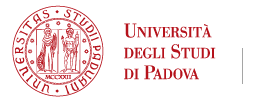
SPOTLIGHT: Molecular Anthropology - what are the next questions?
Pubblicato il: 24.03.2022 11:28
For nearly fifty years, Molecular Anthropologists have used biological data to address an essentially tripartite set of research interests, including: i) population dynamics and demographic inference; ii) population movements and admixture; iii) patterns of selection and adaptation and their impact on human health. In the last decade, with the advent of the omic era, genomic and proteomic (as well as stable isotopes studies) have expanded the data available to the field and, as a consequence, encapsulated additional research areas such as the relationship between our lineage and other primates, extinct/archaic humans and human populations from the past.
Dealing with omic data and complex spatio-temporal models requires mastering bioinformatic and statistical tools, as well as the ability to exploit the potential of inferences based on an unprecedented share of data and develop more sophisticated approaches of model testing. This requires the interaction of researchers with new backgrounds, including ecology and hard sciences such as physics, computer science, engineering and, ultimately, mathematics.
In the last ten years, such a multidisciplinary effort yielded a number of important breakthroughs which helped clarify the crucial steps in our evolutionary history, as well as elucidating the major events that led our species to colonize most lands of the globe. The resulting big picture sees a separation of our ancestors from the pan lineage as a complex and long speciation process, with alternating periods of divergence and hybridization, whose completion is estimated between 13 and 4 M years ago. Subsequently, the evolution of the genus Homo would have occurred in Africa, culminating with the final exit from the continent of anatomically modern humans about 70 Kya, who admixed with archaic humans in Eurasia and probably also in Africa between 65 and 30 Kya. Occupation of other continents would have occurred from 50 to 20 Kya, with the Americas being the latest to be reached by Homo sapiens.
A large consensus exists on the concept that all extant human populations belong to a recently evolved species with little genetic diversity and no discrete sub-groups. Several new signals of genetic adaptation to a number of modified or extreme environments have also been unveiled, such as those for lactase persistence in relation to the introduction of pastoral practices and an archaically introgressed allele of the Endothelial PAS domain-containing protein 1 in populations (Tibetans) living at high-altitude. These impressive achievements, witnessed by almost weekly scientific articles in high impact journals and by the flourishing of popularization of science on the subject, also call for some pondering on whether the peak of Molecular Anthropology research has been reached and, in case, what would be its future in the next decades.
The "Next Questions in Molecular Anthropology" forum, recently appeared on the Journal of Anthropological Sciences (JAS) provides an overview of some of the most expanding lines of research. Following tightly the development of nation-wide biobanks set up by multi-center consortia, efforts previously addressed at tens of genomes and hundreds of uniparental lineages have now been scaled up by many orders of magnitude (http://doi.org/10.4436/JASS.99012). On the other hand, the ready availability of full genome sequences made it possible to include non-human organisms within the broader umbrella of Anthropological questions aimed at addressing past and present patterns of animal and crop domestication (http://doi.org/10.4436/JASS.99007). An even more extreme twist on the already multidisciplinary nature of Molecular Anthropology has been offered by the ancient DNA revolution, which has offered constructive interaction with Palaeoclimatologists, Archaeologists, Historians and, perhaps even more surprisingly, Microbiologists (http://doi.org/10.4436/JASS.99011). Further on these multidisciplinary interactions, the study of adaptation in human populations made it clear that genomic alone cannot suffice in pinpointing the causal variants of such selection signals. Long waited “functional follow ups” have now been undertaken and Cellular Biology as well as Immunology are now two powerful adds-on to the field (http://doi.org/10.4436/JASS.99006). Another crucial avenue, in light of the deluge of genomic data made publicly available by researchers worldwide, is the continuous development of new analytical tools capable of eventually making use of the full information embedded within a genome, hence beyond the classical perspective based on unlinked markers (http://doi.org/10.4436/JASS.99010 and http://doi.org/10.4436/JASS.99009 ).While one wonders what the future will be, it is also important to look back to understand the extent to which we are seeing a "revolutionary" rather than "evolutionary" remodeling of Molecular Anthropology. Whether or not unilinear mtDNA and Y chromosome markers will continue to play a role, alongside complete genomes, in answering specific anthropological questions is a question which merits (http://doi.org/10.4436/JASS.99005). The final contribution to the forum begins by looking at the birth and development of Molecular Anthropology in the United States to address a question that looks ahead and regards all of us: What path should a student take to play a role in the future of Molecular Anthropology, and how much “multidisciplinarity” can one subject intake before exploding into a number of research questions? (http://doi.org/10.4436/JASS.99008)
(Adapted from: http://doi.org/10.4436/JASS.99013 by Luca Pagani and Giovanni Destro Bisol, under CC BY-NC 4.0)
Image credits: www.flickr.com/photos/apelad/6374960439





